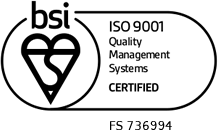The fusion of advanced materials with the power of information technology is providing designers with a new family of engineered materials and structures.
By integrating sensors and actuators within a structural material, so called ‘Smart Structures’ can operate at the very limits of their performance envelopes and even to their structural limits without fear of exceeding either.
Categorised as either ‘sensory’ or ‘adaptive’, ‘smart’ structures can for example, provide maintenance engineers with a full report on their performance history, as well as the location of defects, whilst also counteracting unwanted or potentially dangerous conditions such as excessive vibration.
Sensory structures are already making an impact on structural health and usage monitoring in the aerospace and civil engineering sectors, e.g. embedded fibre optic sensors can be used in applications ranging from aerospace and maritime to civil engineering.
Adaptive structures, with their ability to control shape and vibration response in real-time, will have a significant impact on application sectors ranging from adaptive aircraft wings and noise suppression, to vibration resistant buildings and consumer goods.
‘Smart’ structures can be fabricated by integrating sensor and actuator materials within a host structural material. Examples of such technology include sensory structures containing fibre optic or piezoelectric sensors and adaptive structures containing piezoceramic, electrostrictive, magnetostrictive and shape memory solid state actuators. The aforementioned actuation materials are solid state, however smart fluids also exist, and have the ability to change their properties given a suitable stimulus.
The dream, of course, is to integrate such combined functionality at the microstructural or atomic/molecular scale, to produce truly ‘smart materials’. However, this is still some way off, even though the enabling technologies, expecially nanotechnology, are undergoing continued and accelerated development in that direction.



